Cross-dressing In Western Comics And Media
A new wave of religious conservatism engulfed the West in the last few years. Because of that, LGBTQ representation becomes scarce, as some politicians oppose it. But it doesn’t mean we can’t thrive, as some remarkable characters already exist. Our sisters need to get to know them. They are part of unique and exciting stories that any cross-dresser can enjoy.
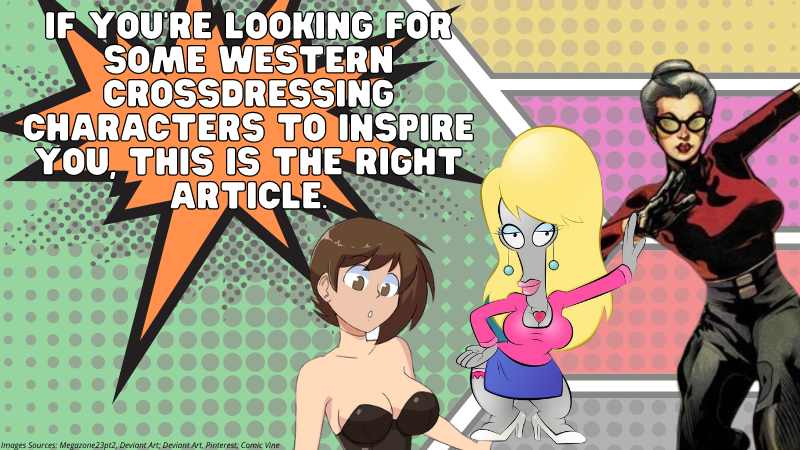
I aim to highlight the best cross-dressing characters in western comics and animation. This way, you can pick the ones you relate to the most and feel represented as a cross-dresser. It shows that there are others like you out there, and you’re not alone. So, if you’re looking for some western cross-dressing characters to inspire you, this is the right article.
1. Kevin (Bodysuit 23)
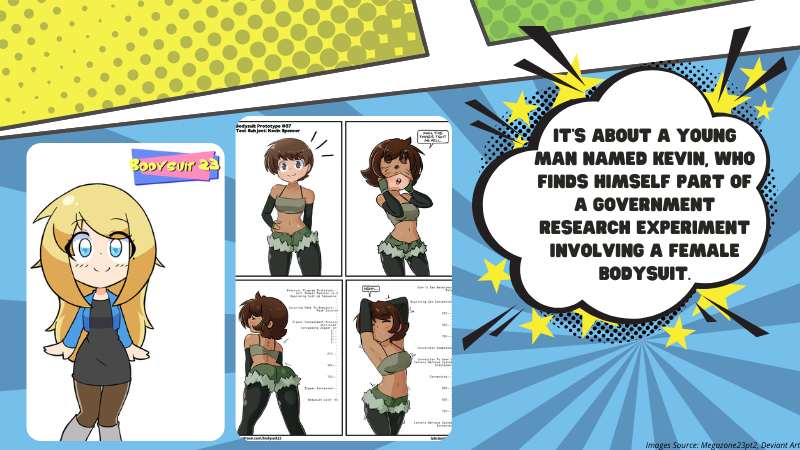
I’ll start with this one since it has a special place in my heart. It’s a webcomic available at DeviantArt and the author’s website that has been running for a while now. It’s about a young man named Kevin, who finds himself part of a government research experiment involving a female bodysuit. This was my first contact with this kind of thing and what encouraged me to explore my gender identity. Thanks to that, I would discover Roanyer’s products a couple of years later. But the main reason I’m recommending it is that it’s a very well-written story with deep characters and tons of emotional moments. It’s one of the best, if not the better cross-dressing stories I have ever read. The character development is incredible, and Kevin’s adventures as “Doris” are fun to read. Younger cross-dressers will most likely relate to most characters and enjoy the series.
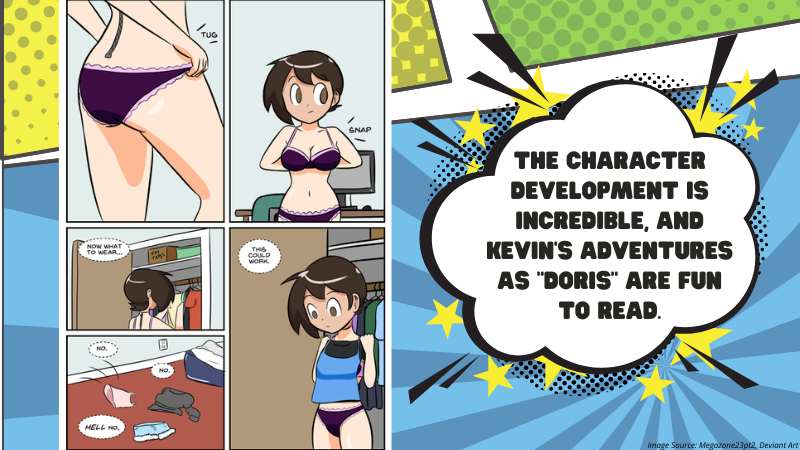
2. Bugs Bunny (Looney tunes)
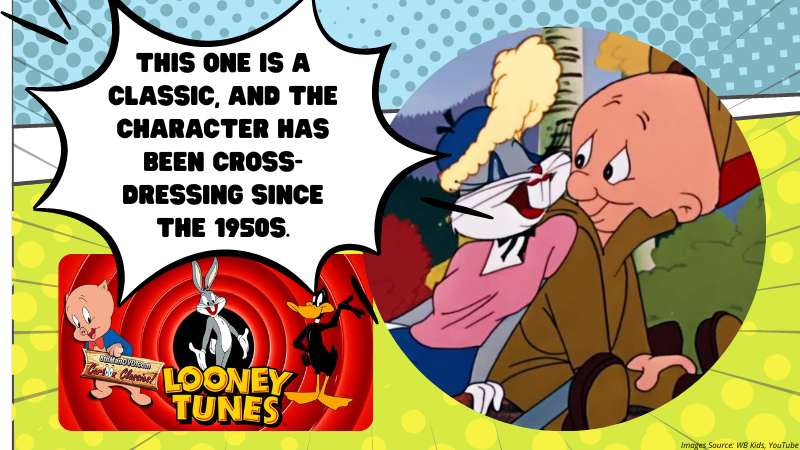
This one is a classic, and the character has been cross-dressing since the 1950s. It was a recurring comic relief in the past, but this was short-lived for the character. It didn’t take long for the warner brother to turn it into a positive depiction of cross-dressing. It’s not a disguise for the character or an ill-intentioned joke. Instead, it’s a personality trait that helps define the character. Bugs do that all the time, and recent cartoons expanded into that, adding new outfits to his wardrobe. The good thing is that he dresses in feminine attire, and no one makes a big deal about it. It’s a natural expression of his gender identity, which some speculate is non-binary. Everyone knows he has a feminine side, and he’s not ashamed of it, which can inspire our sisters to a great extent. It’s a great classic character with a lot to add.
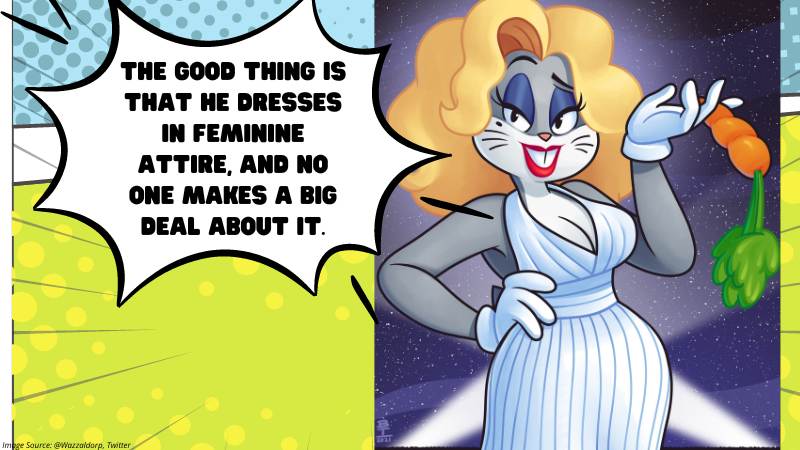
3. Madame Fatal (DC Comics)
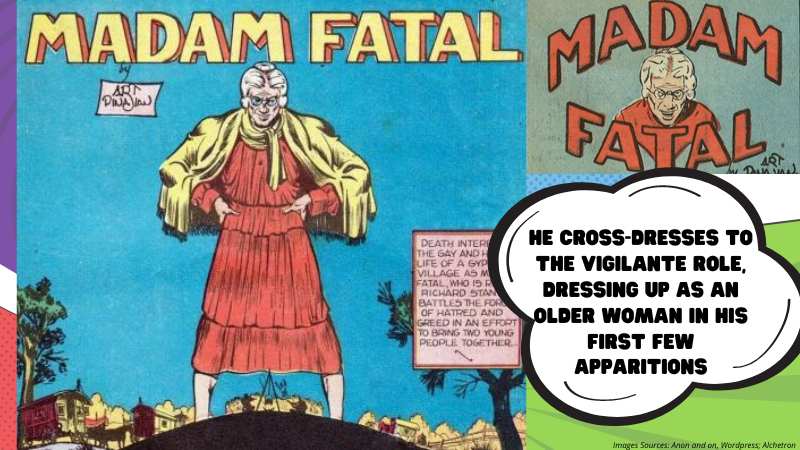
Some people consider Madame Fatal as the first cross-dressing superhero. The character in question is Richard Stanton, a skilled actor-turned-detective. He cross-dresses to the vigilante role, dressing up as an older woman in his first few apparitions. After that, he uses more elaborate disguises, even posing as a female secretary to protect an ally from Nazis. As part of the golden age of comics, this character was neglected and forgotten in time. Some recent comics brought him back, but he still receives less attention than he deserves. The idea of a cross-dressing detective is fantastic and opens many new possibilities. Getting to know this character is an excellent way to understand how cross-dressers were seen half a century ago. It also gives you a perspective of how things have changed and are still changing. Besides that, if more people learn about him, we can provide Madame Fatal the acknowledgment she never had.
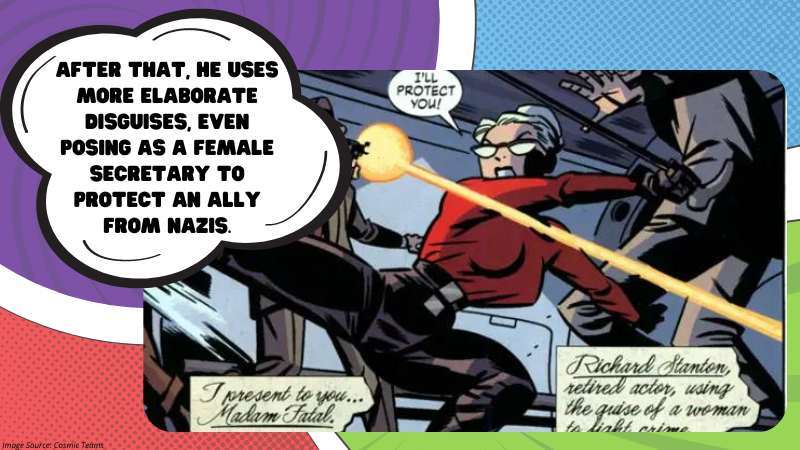
4. Darnell Wade (Marvel comics)
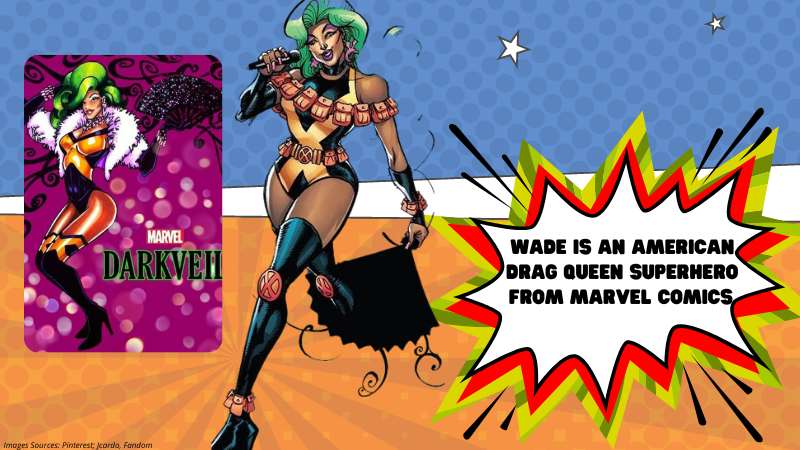
Wade is an American drag queen superhero from Marvel comics. Darnell grows up to be a massive fan of comic books and superheroes and a great drag performer. He creates “Shade,” his drag persona, inspired by heroes from New York. Ans she performs as Shade before gaining mutant powers and becoming a hero herself. Her powers include manipulating dark energy. She uses it to teleport herself and others through another dimension. She adopts “Dark Veil” as her superhero alias and participates in the mutant pride parade.
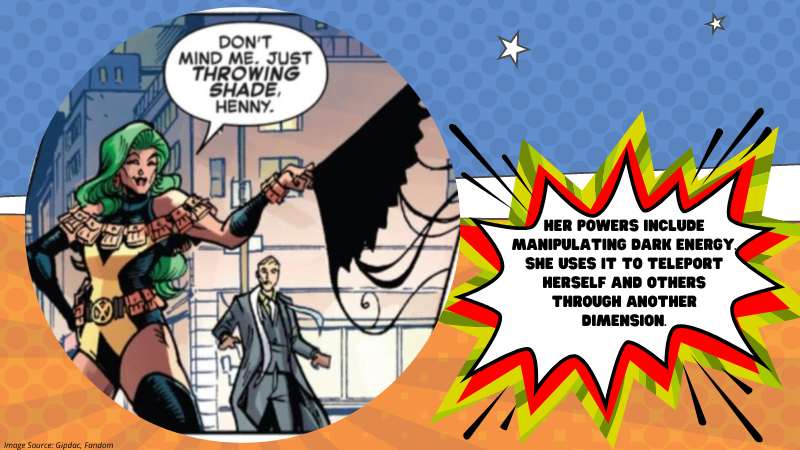
X-Men comics always treated themes such as discrimination and prejudice. They’ve done so often using mutants as a metaphor for minorities. Including a drag queen opens up space for cross-dressing representation and gender-questioning characters. Shade is an excellent example; her story can inspire others to be themselves. I also wanted to mention the upcoming “X-Men 97” animated series. They say it features a non-binary character.
5. Loki Laufeyson (Norse mythology/ Marvel comics)
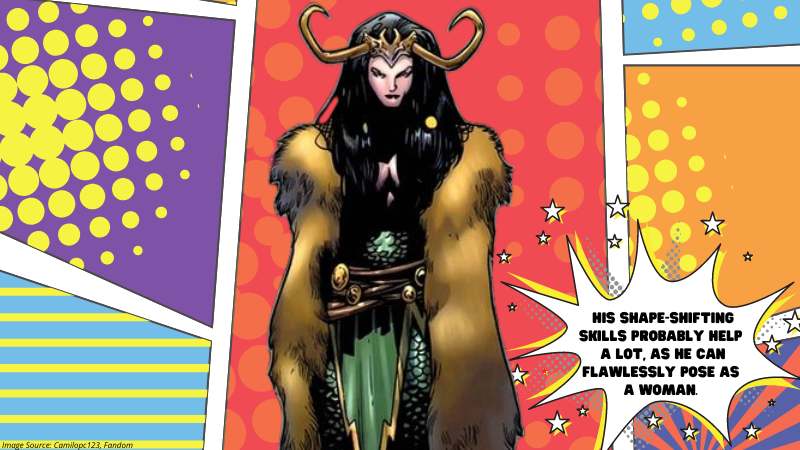
In Norse mythology, Loki Laufeyson is Odin’s stepson and the god of mischief. Marvel’s rendition of the character incorporates much of it, but this version is gender-fluid. Still, he presents himself as male most of the time and sometimes considers himself a cross-dresser. His shape-shifting skills probably help a lot, as he can flawlessly pose as a woman. He even impersonated Wanda Maximoff, AKA the Scarlet Witch, for a while. He’s shown to like it, and he’s a good character since his backstory is appealing and he has many redeeming qualities. The way Loki expresses gender is pretty unique for comic book characters. Some feminine versions of him also appeared, such as Lady Loki and Sylvie. Check out the Loki TV series on Disney plus if you want to know the character better. He means a lot to non-binary folks and has a lot of LGBTQ fans out there, me included.
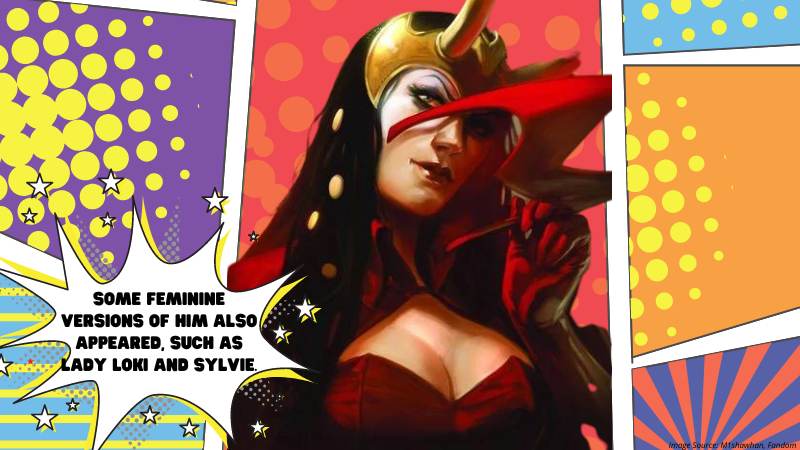
6. Him (Powerpuff girls)
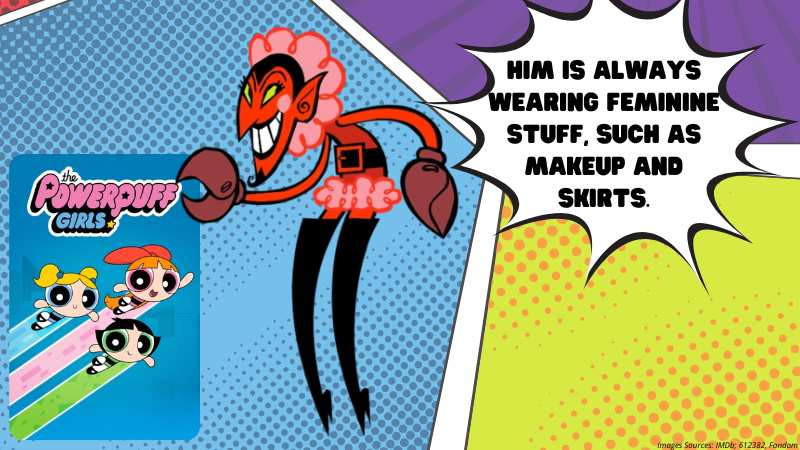
Late 90s cartoons went to new grounds when it comes to gender expressions. By this time, homosexuality was already discussed on TV, and people questioned the concept of gender. It would take another ten years to reach critical levels, so things were invasive. An excellent example is a character known as “Him” from the Powerpuff girls. He’s one of the villains, considers himself male, and goes by masculine pronouns. Still, he’s always wearing feminine stuff, such as makeup and skirts. “Him” helps to break and deconstruct toxic masculinity. He’s not afraid of dressing up as he pleases, despite being a man. But there are still a few issues that we must address. First of all, the character resembles western interpretations of what a demon would look like. It has religious symbolism that leads to a wrong understanding of what cross-dressers are. He’s also often used as a means to make fun of men that act in a feminine way. Some people argue that it’s a misinterpreted character meant to criticize stereotypes. But the lack of clarification makes him a controversial figure for some people. Nonetheless, he was the first contact of many children of my generation with the idea of queerness. And because of that, such an iconic character deserves a place on this list.
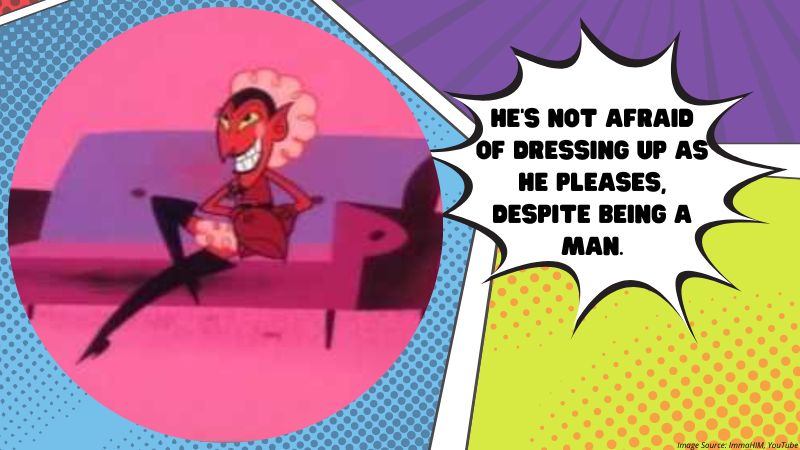
7. Roger (American dad)
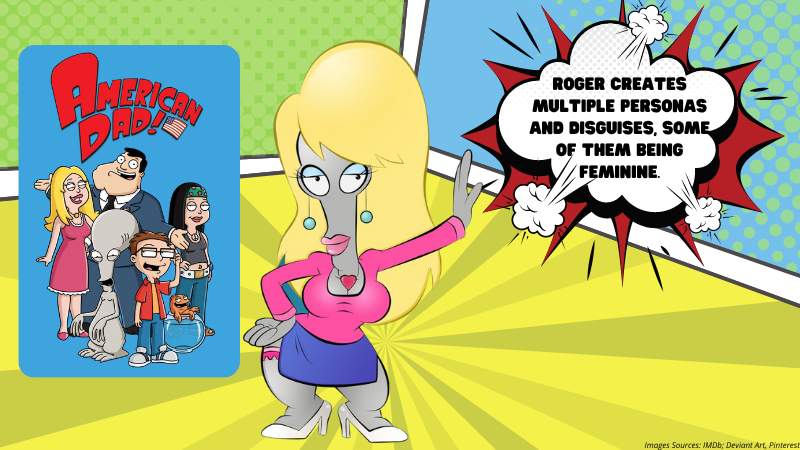
Created by Seth MacFarlane, this animated tv series was a hit in the United States. It tells the story of Stan and his family. He works at the CIA and hides an alien named Roger from them since he saved his life. Roger is constantly bored, so he gets as many jobs as possible to distract himself. To do that, he creates multiple personas and disguises, some of them being feminine. He openly cross-dresses and is pansexual, which is a lot for an American tv show. The public well-received Roger, becoming one of the show’s stars. Putting cross-dressers in central roles like that helps us gain visibility and feel better represented. Besides that, treating cross-dressing as something natural diminishes prejudices and misconceptions. It worked to a certain extent, as no one made fun of the character.
8. Pleakley (Lilo and Stitch)
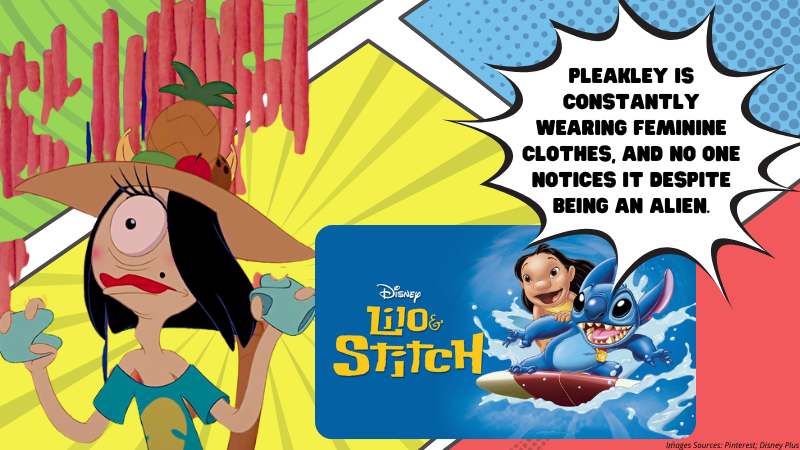
This one is from a Disney movie, but worth mentioning nonetheless. He’s a male alien from the galactic federation that comes to Earth searching for Stitch. And one of the first things he learns here is to cross-dress. He’s constantly wearing feminine clothes, and no one notices it despite being an alien. I wanted to mention this character because he’s an innocent cross-dresser that does it because it’s something he likes. Cross-dressing is even listed as one of his hobbies on the official Disney wiki as something cool and inoffensive. Showing that in a kid’s movie is an excellent step towards normalizing cross-dressing. It starts by reducing prejudices. It shows that cross-dressing can be a hobby and doesn’t make you less of a man for it. That is unless you want it to happen, but I’m that case, you’re more likely a trans person.
As you can see, cross-dressing is not a common trope in western media, but we have a good amount of it. The representation varies greatly, but we can find many positive examples. These are my favorites, which I considered more relevant to our sisters. They might inspire and help them feel well represented in western comics and media. Do you have any other suggestions? We’d love to see them in the comments!
Tagged With:Cross-dressing
1 comment
Leave a Reply
- How to be a Trans Femboy Influencer in 2024
- 7 Easy Ways to Level Up Your Sexy Femboy Beauty Routine Instantly
- How to Make a Fake Pregnant Belly Look Real: Tips for Every Trimester
- Game On: Sporty Tips for Crossdressers Attending the 2024 Olympics
- How to Pose for Lewd Cosplay Photos for Crossdressers
- How to Explore Crossdresser Bondage Safely and Sensually
Established in 2009, We are a recognized manufacturer and seller of professional crossdressing products.
It is our aim to become not just the most creative manufacturer but also a very considerate seller, as we provide the best quality products for crossdressers all around the world.
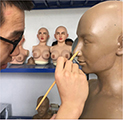
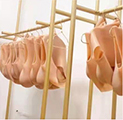








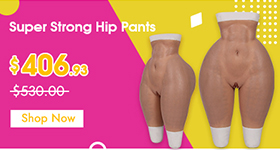



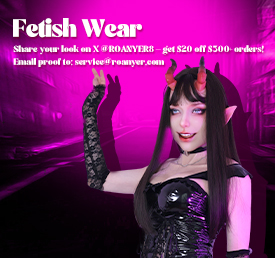

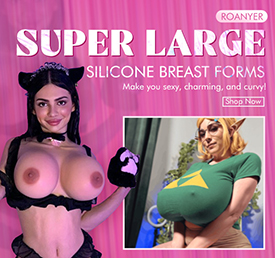
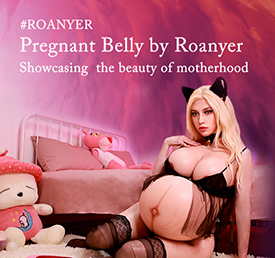


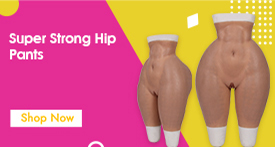


 Breast Forms
Breast Forms  Body Suit
Body Suit  Realistic Mask
Realistic Mask  Femini Girdle
Femini Girdle Hip & Butt Enhancement (8)
Hip & Butt Enhancement (8) Penis Prosthesis
Penis Prosthesis Fake Muscle
Fake Muscle Bikini
Bikini  Wig
Wig  Corsets
Corsets Course
Course service@roanyer.com
service@roanyer.com +8618652200711
+8618652200711 Facebook
Facebook YouTube
YouTube Twitter
Twitter Instagram
Instagram





Great Article. It is funny one of the older episodes the BIg Snooze has Bugs dressing up Elmer. Another has Daffy Duck putting a wig on Porky not sure of the title.